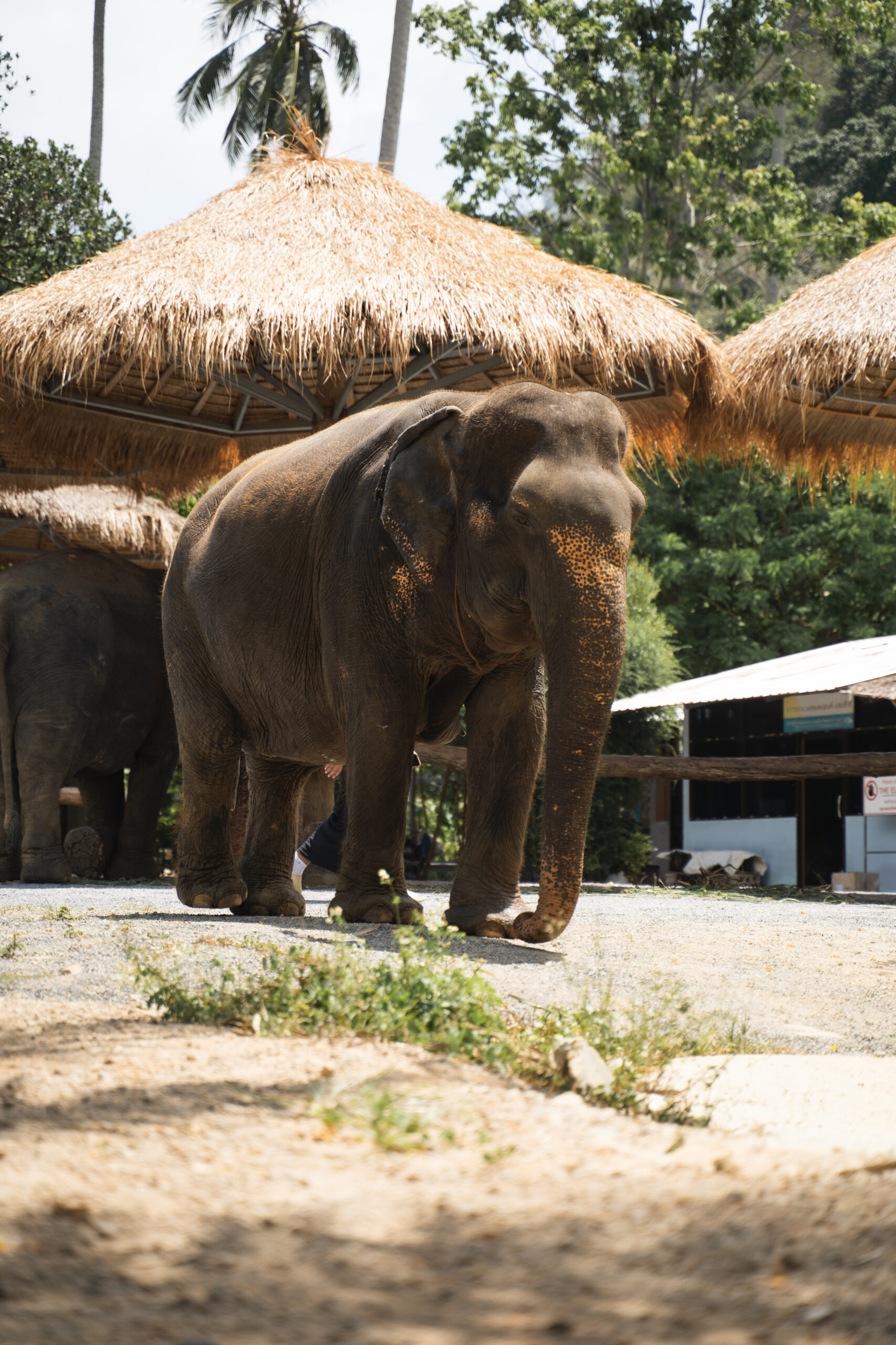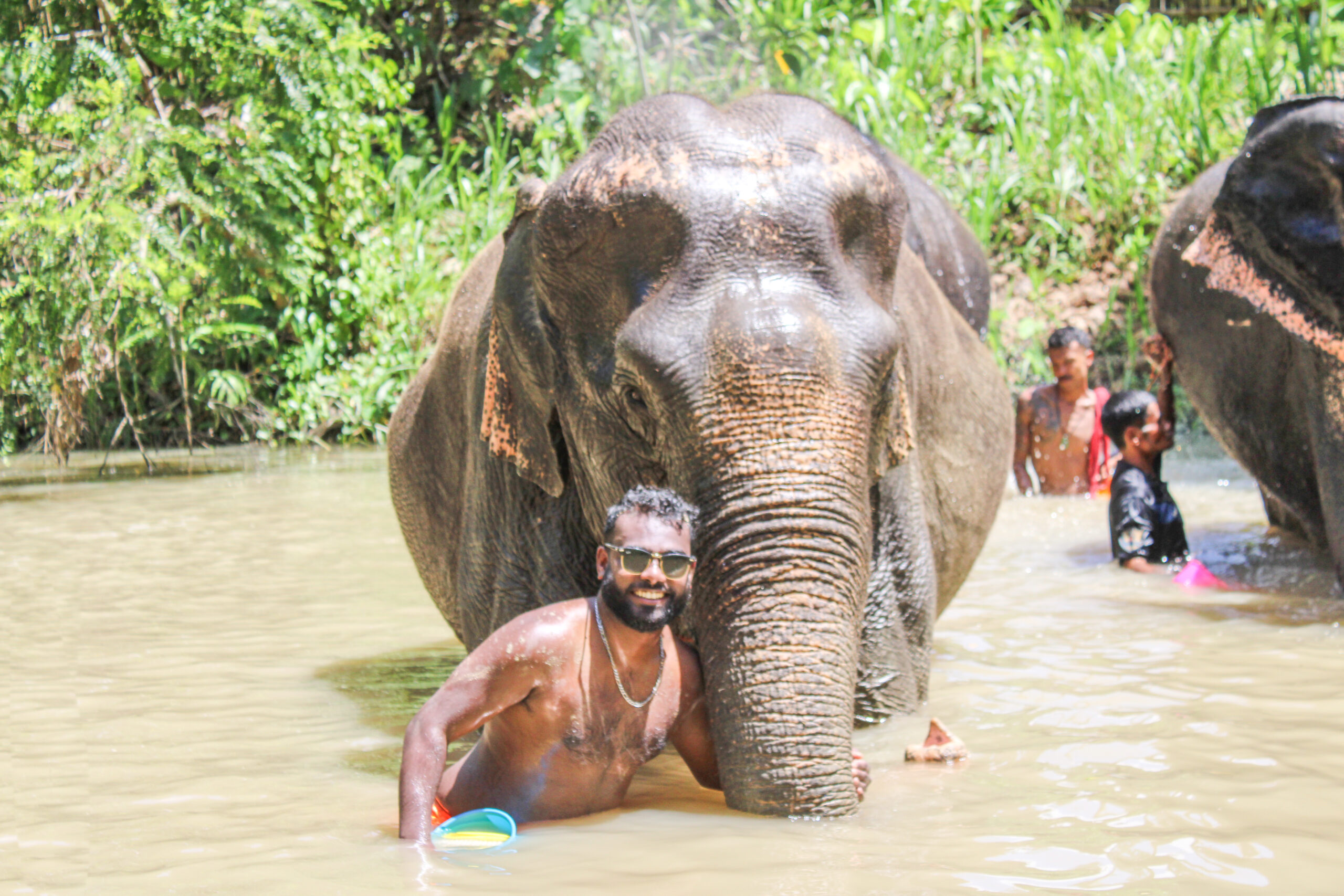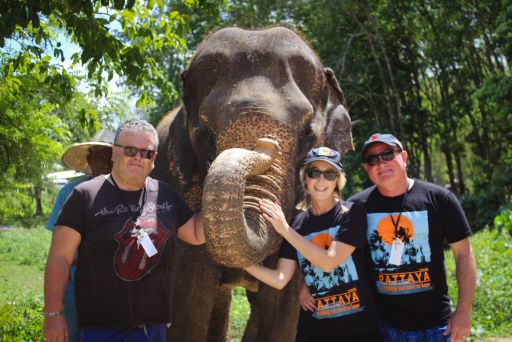Elephants, the majestic giants of the animal kingdom, captivate our hearts and minds with their sheer size and presence. At Elephant Camp, visitors can embark on a remarkable journey to discover the fascinating world of these incredible creatures. As you step into the camp, you will immediately be struck by the gentle nature of the elephants, their calm demeanor, and the undeniable intelligence in their eyes.
Walking alongside these magnificent creatures, you will witness their unique social dynamics. Elephants are highly social animals, living in close-knit family groups called herds. At Elephant Camp, you will have the opportunity to observe their intricate communication, as they use a combination of vocalizations, body language, and even touch to express their emotions and intentions. It is truly a privilege to witness these interactions up close and gain a deeper understanding of the complex social structure that underpins an elephant’s life.
Insights into Elephant Behavior Understand the social dynamics and communication among elephants
Elephants, with their complex social structures, exhibit fascinating behavior and communication patterns. These majestic giants live in tight-knit family units called herds, consisting of matriarchs, adult females, and their offspring. The matriarch, often the oldest and wisest female, leads the herd, making important decisions about food sources, waterholes, and potential threats. The cohesion within the herd is palpable as they move together, communicate with a range of vocalizations, and use body language to convey messages. Elephants trumpet, rumble, and roar, creating a symphony of sounds that serve as an intricate form of communication within the herd. Their extensive vocal repertoire allows them to convey various messages, from distress to excitement, ensuring effective coordination and cooperation.
In addition to vocalizations, elephants use a wide array of physical movements and gestures to communicate with one another. They use their trunks, which are highly flexible and dexterous appendages, to touch and interact with fellow elephants. This tactile communication plays a crucial role in strengthening social bonds and expressing emotions such as affection or reassurance. Furthermore, elephants employ visual cues like ear positioning, tail movements, and body postures to convey messages. Raising their trunks high in the air can signify dominance or aggression while flapping their ears or wagging their tails indicates a sense of playfulness or relaxation. The intricate interplay between these verbal and non-verbal forms of communication allows elephants to maintain social harmony and ensure the smooth functioning of their intricate social dynamics.
The Bond between Elephants and their Caretakers: Explore the unique relationship between elephants and their mahouts
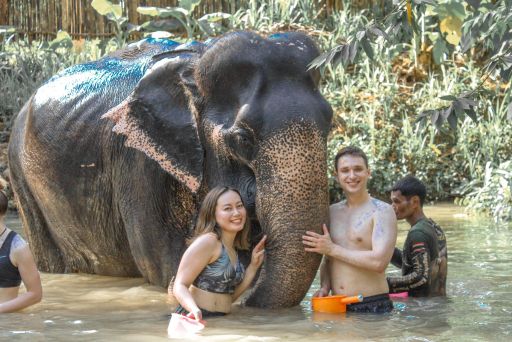
The bond between elephants and their caretakers, known as mahouts, is truly remarkable. These caretakers, often having grown up with elephants, develop an incredible connection with these majestic creatures. Their relationship is built on mutual trust, respect, and a deep understanding of each other’s needs.
Mahouts spend hours with elephants, tending to their every need and forming a strong emotional bond. They communicate with gentle gestures, soft words, and even the touch of their hands. This unique relationship allows mahouts to understand the temperament and behavior of each elephant, which is crucial in ensuring their well-being. Through their close bond, mahouts can guide and care for elephants in a way that brings out the best in them, creating a harmonious partnership that is both awe-inspiring and heartwarming.
Conservation Efforts Learn about the conservation initiatives taken to protect elephants and their habitats
Conservation initiatives play a vital role in protecting elephants and their habitats. These majestic creatures are facing numerous threats, including habitat loss, poaching, and conflicts with humans. To counter these challenges, elephant conservation organizations are working tirelessly to safeguard their populations and preserve their natural habitats.
One of the key conservation efforts is the establishment of protected areas specifically designated for elephant conservation. These areas provide a haven for elephants, allowing them to roam freely and engage in their natural behaviors. Wildlife authorities and conservationists collaborate to enforce strict measures to prevent illegal activities such as poaching. Additionally, these initiatives focus on educating local communities about the importance of elephant conservation and encouraging their participation in sustainable practices. Through these efforts, we hope to secure a future where elephants can thrive in harmony with their ecosystems.
Elephant Intelligence: Uncover the incredible cognitive abilities and problem-solving skills of these gentle giants
Elephants, despite their immense size, possess remarkable cognitive abilities that continue to astound researchers. They exhibit a strong memory, often recognizing and remembering individuals even after years of separation. This remarkable feat highlights their intelligence and emotional depth. Furthermore, elephants openly display problem-solving skills, whether it be using tools, coordinating group efforts, or adapting their behavior to overcome obstacles. It is believed that their complex social structure also contributes to their cognitive abilities, as they learn from their interactions within the herd.
One study, conducted by researchers at Cambridge University, found that elephants are capable of understanding human gestures and cues. In the experiment, elephants were successfully able to interpret pointing gestures, indicating a high level of cognitive flexibility and comprehension. These findings suggest that elephants possess a level of intelligence and social cognition that is rare in the animal kingdom. The study further emphasizes the need for continued research and conservation efforts to protect these extraordinary creatures and further understand their cognitive capabilities.
Traditional Elephant Training Methods Delve into the traditional techniques used to train and work with elephants
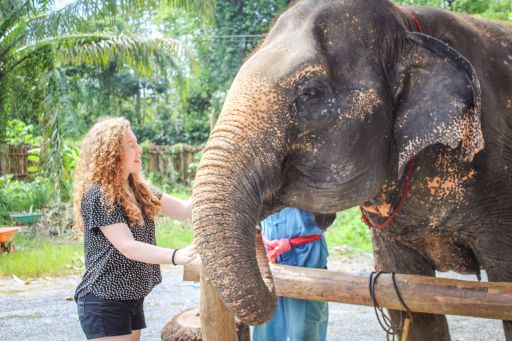
When it comes to training elephants, traditional techniques have been used for centuries. These methods typically involve the use of positive reinforcement and repetition to teach elephants various commands and behaviors. One common technique is known as “free shaping,” where the trainer rewards the elephant for performing desired behaviors and gradually shapes these behaviors into more complex tasks. This approach relies on patience and consistency, ensuring that the elephant understands the desired behavior and feels motivated to perform it.
Another traditional method is the use of verbal commands and physical cues. Trainers establish a repertoire of verbal cues and gestures that elephants learn to recognize and respond to. These cues are often paired with rewards such as treats or affectionate gestures. Through consistent repetition, elephants learn to associate specific commands with certain actions, allowing for effective communication between the trainer and the elephant.
Overall, traditional elephant training methods focus on establishing a relationship of trust, respect, and understanding between the trainer and the elephant. By utilizing positive reinforcement and clear communication, these techniques aim to create a harmonious working partnership built on cooperation and understanding.
• Free shaping is a common traditional technique where trainers reward elephants for desired behaviors and gradually shape them into more complex tasks.
• Verbal commands and physical cues are used to establish effective communication between the trainer and the elephant.
• Rewards such as treats or affectionate gestures are often paired with verbal cues and gestures to reinforce desired behaviors.
• Traditional methods prioritize building trust, respect, and understanding between the trainer and the elephant.
Elephant Welfare Gain knowledge about the efforts made to ensure the well-being and health of elephants
Efforts are being made across the globe to ensure the well-being and health of elephants. These efforts aim to protect these magnificent creatures from harm and provide them with a safe and nurturing environment. Sanctuaries and conservation organizations work tirelessly to address the various aspects of elephant welfare, such as nutrition, healthcare, and social interaction.
One crucial aspect of elephant welfare is providing proper nutrition to these animals. Elephants require a diverse diet, consisting mainly of grasses, leaves, bark, and fruits. In captivity, caretakers carefully plan their diets to ensure that they receive all the necessary nutrients. Additionally, efforts are made to replicate their natural foraging behaviors through feeding enrichment, where food is scattered or hidden to encourage mental stimulation and physical activity. This helps to keep their bodies and minds healthy, promoting overall well-being.
Discuss the impacts of elephant tourism and the importance of responsible practices
Elephant tourism has gained significant popularity in recent years, with many tourists seeking the opportunity to get up close and personal with these majestic creatures. However, it is important to recognize the impacts that elephant tourism can have on the animals themselves. The demand for elephant rides and shows has resulted in unethical practices, such as the cruel training techniques used to domesticate elephants for entertainment purposes. Many of these elephants are subjected to harsh conditions, chained for long hours, and deprived of their natural habitats and social interactions. This exploitation not only compromises the welfare and well-being of the animals but also threatens their conservation as a whole.
Responsible practices in elephant tourism are crucial to ensuring the ethical treatment of these magnificent animals. Increasingly, more organizations and individuals are advocating for responsible elephant tourism, promoting alternative and sustainable ways for tourists to interact with elephants. This includes initiatives such as elephant sanctuaries and rescue centers, where elephants are provided with spacious and natural environments to roam freely, without being subjected to cruel training methods. The emphasis is on observation and interaction in a manner that respects the elephants’ natural behaviors and habitats, rather than forcing them to perform unnatural acts for entertainment purposes. By supporting responsible elephant tourism, we can contribute to the well-being of these incredible creatures while preserving their habitats and promoting conservation efforts.
Frequently Asked Questions
What is elephant tourism?
Elephant tourism refers to the practice of using elephants as a tourist attraction, where visitors can interact with, ride, or watch elephants in various activities.
What are some impacts of elephant tourism?
Elephant tourism can have both positive and negative impacts. On the positive side, it can contribute to the local economy and raise awareness about elephant conservation. On the negative side, it can result in animal cruelty, exploitation, and the disruption of natural behaviors and habitats.
Why is responsible practice important in elephant tourism?
Responsible practices in elephant tourism are crucial to ensure the well-being and welfare of the elephants involved. It helps to minimize negative impacts and promotes sustainable and ethical tourism practices.
What are some examples of responsible practices in elephant tourism?
Responsible practices in elephant tourism include promoting non-riding experiences, providing spacious and natural environments for elephants, ensuring proper care and treatment, supporting conservation initiatives, and educating visitors about the importance of elephant welfare.
How can elephant tourism impact the conservation of elephants and their habitats?
Elephant tourism can have both positive and negative impacts on conservation efforts. When done responsibly, it can generate funds that can be used for conservation initiatives and habitat protection. However, irresponsible practices can contribute to the exploitation and degradation of elephant habitats.
What are some traditional elephant training methods?
Traditional elephant training methods vary across cultures but often involve the use of force, such as using bullhooks, chains, and physical discipline. These methods are considered outdated and unethical by many organizations and conservationists.
What efforts are made to ensure the well-being and health of elephants in elephant tourism?
Efforts to ensure the well-being and health of elephants in elephant tourism include providing proper veterinary care, nutrition, and exercise, as well as promoting natural behaviors and social interactions. Regular health checks and monitoring are also essential.
How intelligent are elephants?
Elephants are highly intelligent animals. They have complex social structures, excellent memory, self-awareness, and problem-solving abilities. They can learn and understand various commands and have even shown artistic and musical skills.
Can visitors ride elephants in responsible elephant tourism?
Responsible elephant tourism discourages the riding of elephants as it can cause physical and psychological harm to the animals. Instead, visitors are encouraged to observe elephants in their natural habitats and participate in non-riding experiences.
What can visitors do to support responsible elephant tourism?
Visitors can support responsible elephant tourism by choosing tour operators and sanctuaries that prioritize the welfare of elephants. They can also educate themselves about ethical practices and spread awareness to others. Additionally, supporting conservation initiatives and organizations dedicated to elephant welfare can make a positive impact.



